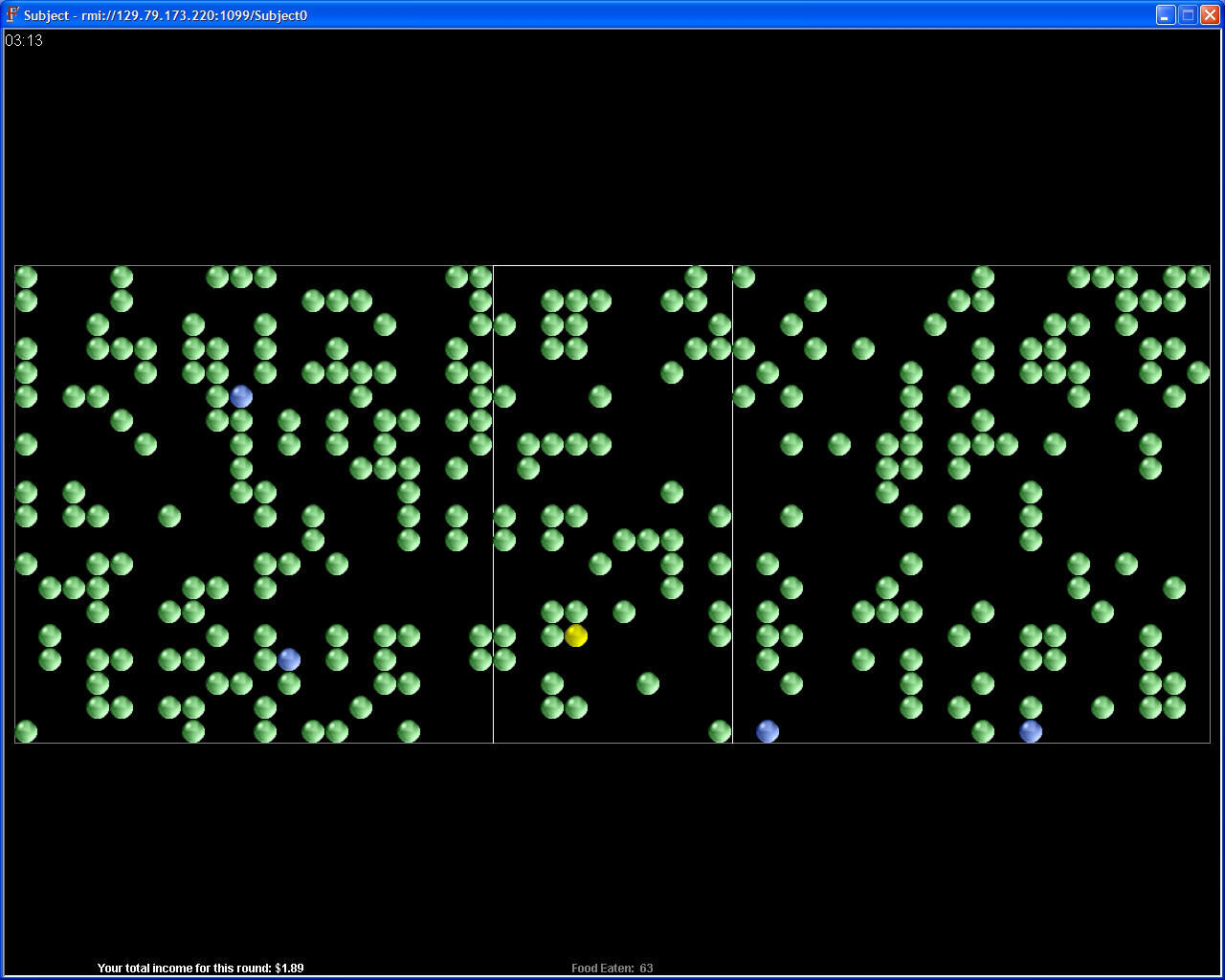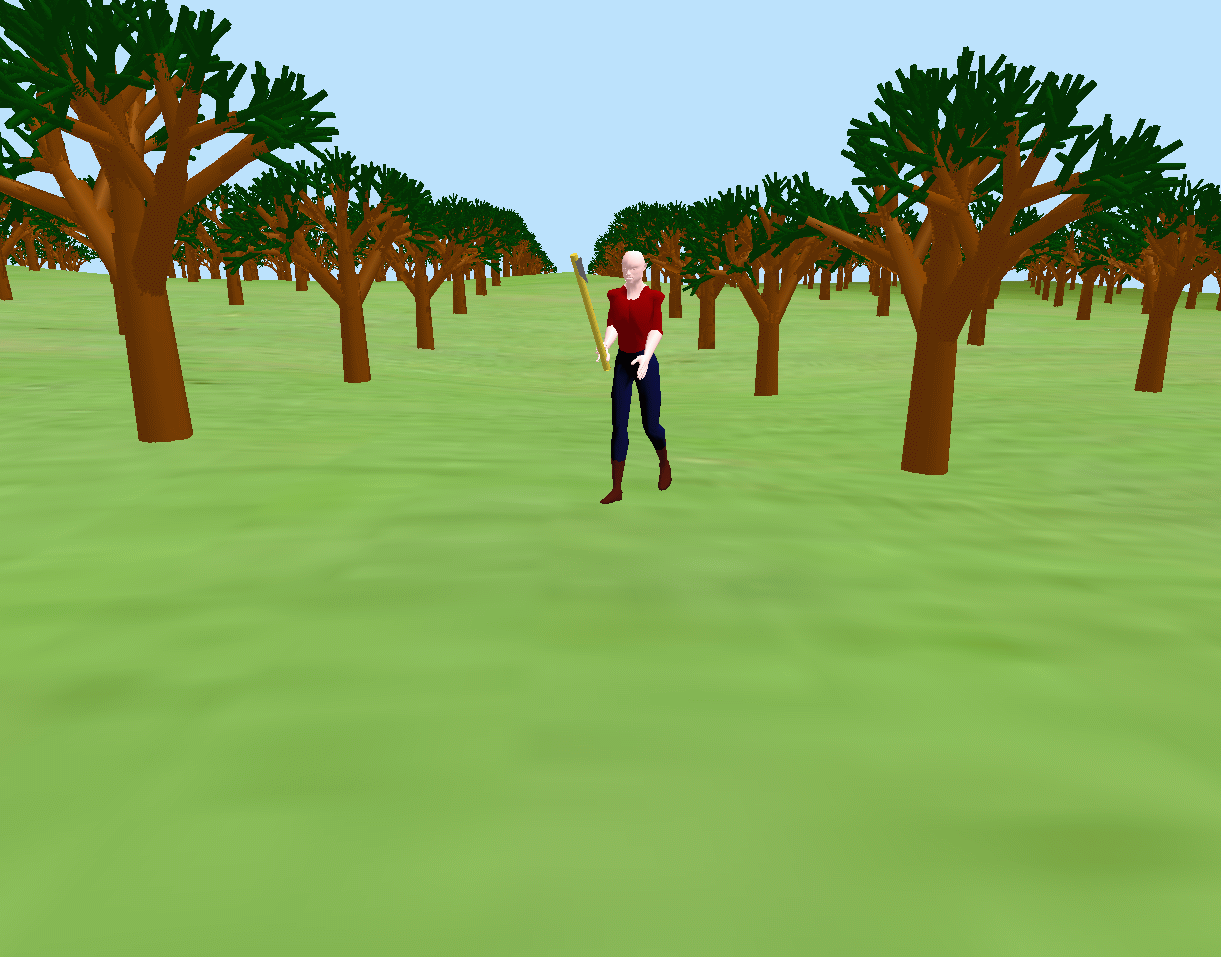
The Dynamics of Rules in Commons Dilemmas
NSF Grant within Human and Social Dynamics Program
PI: Marco Janssen
co-PIs: Rob Goldstone, Fil Menczer, and Lin Ostrom
cooperators: Francois Bousquet (CIRAD) and Juan Camilo Cardenas (University de Los Andes)
Experimental design: lab (Janssen, Ostrom, Goldstone and Menczer), field (Janssen, Bousquet, Cardenas, Ostrom)
experimental software development: private property experiments (Yajing Wang, Muzaffer Ozakca, Janssen); costly sanctioning experiments (Deepali Bhagvat, Allen Lee, Janssen)
Support in lab experiments Indiana University: Wang, Michael Schoon, Tun Myint, David Schwab, Pamela Jagger, Frank van Laerhoven, Rachel Vilensky
Various social sciences have contributed to understanding how humans make decisions in a given rule set of experimental games, such as social dilemmas, coordination, and bargaining. However, the rules of the games are not fixed in real-life settings. Not many systematic studies have been performed on the question of how humans are able to change the rules in commons dilemmas. From field studies it is well known that people invest significant effort in crafting new rules. This project will study what causes individuals to invest in rule development, and which cognitive processes explain the ability of humans to craft new rules.
The main research combines experiments and modeling. We use three types of experiments which we will discuss briefly:
- Laboratory experiments. We developed an artificial environment where a group of 5 human subjects share a renewable resource (Figure 1). The human subjects can derive monetary rewards by collecting tokens by moving their agents around on the screen. We have a number different treatments. In one of them the subjects can vote on a restriction on their harvesting opportunities by allocating private properties. In the other treatments the private property rule is imposed, or there is no opportunity to include private property. Those who break the rule have a chance to be caught and pay a penalty. We have performed experiments to test a number of effects including the impact of experience on the behavior of the subjects, the effect of communication, and the effect of imposed rules versus chosen rules. In the Fall of 2006 we will perform experiments with endogenous costly sanctioning. Some movies of experiments can be viewed here: (private property experiment) and (communication experiment). The movies show snap shots for each 2 seconds in the experiment. You can view the movies by using Flash or Quickmovie. An additional movie from Spring 2007 experiments can be viewed here.
- Field experiments. Paper and pencil experiments are designed for the field in Colombia and Thailand. We designed three types of games related to the resources irrigation (how much to contribute to a public good and how to allocate the public good), forest (how much to take from a renewable resource), and fisheries (when to harvest where). We test these three types of games in three types of communities: irrigation dominated, fishery dominated, and forestry dominated. The subjects can make choices which type of rule (lottery type, rotation type or property rights). We are interested which type of rule communities chose, whether this relates to their own experience with governance, and the difference between imposed and chosen rules. We have performed the pretests, and will perform the actual experiments this Winter.
For both laboratory and field experiments we will develop agent-based models and test on the data which type of behavioral models best explain the data.
- Role games. The field experiments provide a starting-point to perform a companion modeling exercise. This mean that specific queries on rule crafting for each community is used to perform role games to solicit more understanding how the particular communities develop and adapt institutional rules. The resulting models are socially validated by the communities.

Figure 1: A
The different types of experiments and modeling relate to each other (Figure 2). Different types of experiments have different level of control. During the first year of the project we focused on the design of the experiments due to these differences, and to increase the likelihood that the different activities have synergetic effects. The main bottleneck we faced were the different traditions in doing experiments and role games, which led to discussions which path to follow when we want to align the different types of activities. For example, the role of subject payments was an important concern. We decided to use monetary incentives, but for some communities in the field we may decide not to pay subjects in monetary units — but in other valuable assets — if monetary units have no meaning for the subjects. The designs of the experiments provide us the opportunity to test and compare the results of different levels of control and context. Laboratory experiments provide detailed information of many real time decisions. Experiments in the field provide less control but include some context of real resource users. In the role games the focus is on the context of the particular communities. Due to the different focuses we aim to develop a number of models that are consistent to eachother and provide some core findings how people invest in rule creation.

Figure 2: The relation between different types of experiments and the modeling activities.
Based on the experiments in the laboratory and the field, we will develop a software available as downloadable educational tools, with which students all over the world will be able to experiment with rule-crafting in commons dilemmas. Besides the abstract version shown in Figure 1, we also will develop 3D versions with animation of realistic avatars in their environment. See for a movie of a prototype.

This project will contribute to the methodological development of agent-based models by combining laboratory and field experiments, and role games, and to the empirical testing of alternative behavioral models. It may have a broad impact in political science and ecosystem governance by deriving an understanding of what factors affect the ability of resource users to change institutional rules effectively. The project will strengthen the collaboration on experimental research and agent-based modeling between Asia, Latin American and the USA.
Publications
Cardenas, J.C, M.A. Janssen, and F. Bousquet, Dynamics of Rules and Resources: Three New Field Experiments on Water, Forests and Fisheries, Handbook on Experimental Economics and the Environment, edited by John List and Michael Price [pdf][protocols]
Goldstone, R.L. and M.A. Janssen (2005), Computational models of collective behaviour, Trends in Cognitive Science 9(9): 424-430 [pdf]
Janssen, M.A. (2005), Evolution of Institutional Rules, Complexity, 11(1): 16-23 [pdf]
Janssen, M.A. and C. Bushman, Evolution of cooperation and altruistic punishment when retaliation is possible, Journal of Theoretical Biology, in press [pdf]
Janssen, M.A. and R.L. Goldstone (2006), Dynamic-persistence of cooperation in public good games when group size is dynamic, Journal of Theoretical Biology 243(1): 134-142 [pdf]
Janssen, M.A., R.L. Goldstone, F. Menczer and E. Ostrom (2008), Effect of rule choice in dynamic interactive spatial commons, International Journal of the Commons, 2(2): 288-311 [pdf]
Janssen, M.A., and E. Ostrom, TURFs in the lab: Institutional Innovation in dynamic interactive spatial commons, Rationality and Society, in press [pdf]
Janssen, M.A., N.P. Radtke and A. Lee, Pattern-oriented modeling of commons dilemmas experiments [pdf]
Ostrom, E. (2006) The value-added of laboratory experiments for the study of institutions and common-pool resources, Journal of Economic Behavior and Organization 61(2): 149-163 [pdf]
Robinson, D.T., D.G. Brown, D.C. Parker, P. Schreinemachers, M.A. Janssen, M. Huigen, H. Wittmer, N. Gotts, P. Promburom, E. Irwin, T. Berger, F. Gatzweiler, C. Barnaud (2007), Comparison of empirical methods for building agent-based models in land use science, Journal of Land Use Science, 2(1): 31-55 [pdf]
Steed, B and W. Blomquist (2006) Responses to Ecological and Human Threats to a California Water Basin Governance System [pdf]
Any opinions, findings, and conclusions or recommendations expressed in this material are those of the author(s) and do not necessarily reflect the views of the National Science Foundation.